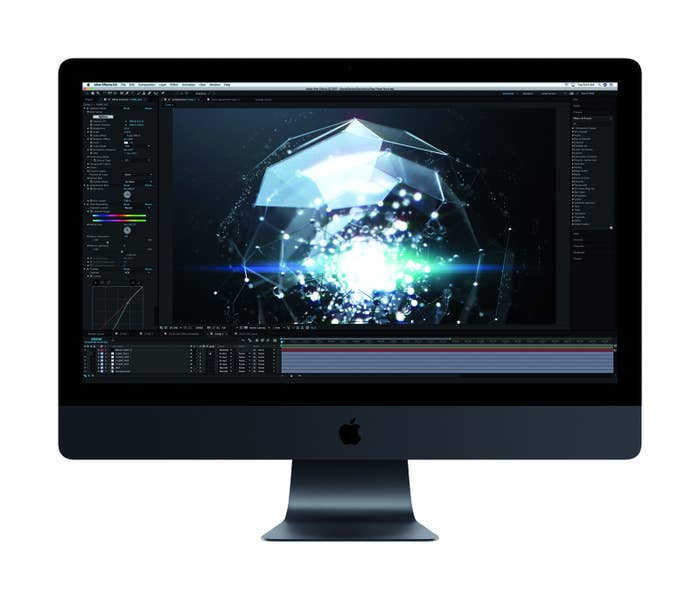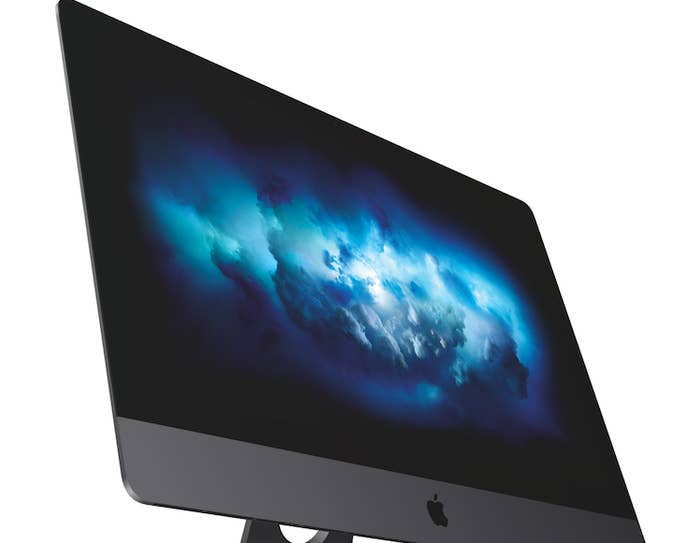
Who needs a $5,000 iMac?
That's a question consumers will get to decide starting today, as Apple releases the first ever iMac — the iconic all-in-one personal computer — with a "Pro" in the name, designating higher specs aimed at demanding professional applications and, of course, a higher price.
And it's a question Apple started to answer as broadly as possible Wednesday, when it showed off the new computer and a suite of the nifty and nimble things it can do at the TriBeCa loft space that it rents, like the college-age son of a shipping magnate.
Look, I can attest, the iMac Pro can do a lot.
Thanks to its very spiffy new graphics processor, it can render tens of millions of polygons really, really fast, as demonstrated by duly impressed employees of firms that make the modeling software behind major Hollywood blockbusters and Fortune 500 ads; 3D medical imaging software; and architectural rendering software.
It can run three virtual iOS machines — the computers-within-the-computer that developers test their software on — simultaneously without losing any speed, thanks to a CPU so loaded down with processing cores that it resembles the abdominals of a dehydrated muscular person. Clearly, Apple, which said that over 60% of all the coding on the repository GitHub happens on its devices, wants to make developers feel appreciated.
And the iMac Pro is effortlessly compatible with the kind of gear — HR platforms like Vive — that the fancy workers of the future will use to do things like sketch race cars and sneakers in 3D with their hands. With their hands! The cofounder of a London company called Gravity Sketch did just that and it was really freaking awesome. Then a journalist (not me) tried, and, well, learning curves are real.
"Children pick it up, no problem," said the cofounder.

The iMac is traditionally a home computer used for things like gaming, photo editing, and emailing with your aunt. People who use Macs to do processor-, memory-, and graphics-intensive things have usually used the tower-housed Mac Pro. (Apple is in the midst of "completely rethinking" that machine.) These are, to generalize, mostly people who do not pay for their own computers — specifically, people who are robustly participating in the economy, like developers, designers, architects, and pop music producers. Jobs that people in romantic comedies seem to be good at.
The iMac Pro is an attempt to cram the horsepower of the Mac Pro into the pleasing rectangle of the iMac, with the beautiful 27-inch Retina screen that can display in 5k resolution, per Apple sources, a billion colors. That's amazing, because I can only name about 10.
There are certainly people — say, developer dads with disposable income — for whom the ability to run DJ software while compiling millions of lines of code in an aesthetically pleasing environment will make the iMac Pro a no-brainer purchase. And for the very wealthy companies that will buy oodles of the most powerful new Apple computer as something of a matter of principle, it's hard to imagine this slick, gray powerhouse will disappoint.
For your aunt, however — assuming your aunt is someone with an income within about two standard deviations of the mean and who does not produce computer graphics for a major Hollywood studio — the iMac Pro is probably too much machine at too high a price. This is a computer for people who are winning at capitalism and the people who work for them.
